Last Updated on June 24, 2022
Today’s vehicles offer a number of creature comforts, driver safety features, and convenience-based applications, unlike anything imagined when the automobile first rose to popularity. We often take many of these features and functions for granted, until they experience an issue that makes them inoperable as a whole.
This is a scenario perhaps best illustrated by the failure of a vehicle’s cruise control. Most motorists have become rather used to the benefits of their vehicle’s cruise control capabilities, which come standard on virtually all of today’s cars, trucks, and SUVs. This makes it all the more troubling when such a system fails to function, or functions improperly.
Many who experience such issues find themselves pondering the root cause of their vehicle’s cruise control-related problems and the cost associated with the impending repair. This in itself can be a rather troubling thought, especially for those facing this particular issue for the first time.
Read on to learn more about the most common causes of a non-functioning cruise control, as well as the average cost of repairs associated with problems of this nature.
How Cruise Control Works
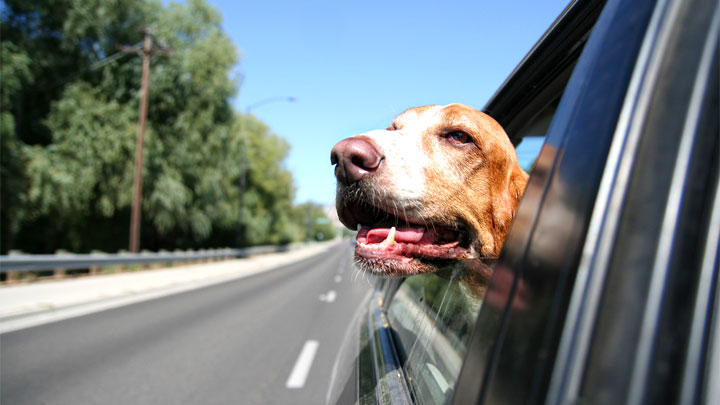
Cruise control systems can be broken down into two categories, vacuum-actuated and drive-by-wire. The first of these two systems is found primarily on older vehicles, while the vast majority of late model vehicles now rely upon the latter. In either case, cruise control is used to regulate a vehicle’s speed at a set input.
The following is a more in-depth description of how each of these two cruise control systems operates.
Vacuum-Actuated
Vacuum actuated cruise control systems utilize a pump/valve mechanism to achieve vacuum delivery to a corresponding actuator. Most vacuum actuators of this type featured internal springs and an inset diaphragm. Attached to this vacuum actuator is a throttle cable, which links to an engine’s throttle plate.
When a driver sets their cruise control to a specific speed, the engine’s ECM signals the system’s vacuum pump/valve to supply a predetermined amount of vacuum to the downstream actuator. This vacuum acts upon the actuator’s internal diaphragm and springs, pulling a set amount of tension on the attached throttle cable.
As an engine’s throttle cable is pulled, a throttle plate within the throttle body itself is opened to the desired degree, allowing a set amount of airflow into the engine’s intake. The degree to which this throttle plate is opened is commanded by a vehicle’s ECM, in a bid to regulate speed, as reflected by a transmission-mounted speed sensor.
Drive-By-Wire
As automotive technology evolved, cable-driven throttle bodies were discontinued in favor of more advanced, electronically driven throttle bodies, which carry a “drive-by-wire” designation. Therefore, the use of vacuum-actuated, cable-driven cruise control systems was also discontinued.
Newer, drive-by-wire cruise control systems operate on the principle of ECM control. Whenever a driver sets their cruise control to the desired speed, a vehicle’s ECM determines the degree of throttle plate indexing required to allow the proper amount of air intake to achieve the desired speed.
Upon calculating this value, the ECM delivers a corresponding electrical signal to an engine’s throttle body actuator. This actuator then indexes the throttle body’s internal throttle plate to the exact position previously called for by the vehicle’s PCM.
Meanwhile, the actual speed of the vehicle itself is constantly monitored by the vehicle’s PCM, in the form of speed sensor feedback.
Reasons Cruise Control Isn’t Working
A vehicle’s cruise control can fail for a number of underlying issues, some of which can prove more problematic than others. Understanding these potential issues can prove helpful when attempting to expedite the process of getting your vehicle back on the road.
The following are several of the most common causes of a non-functioning cruise control system.
#1 – Blown Fuse
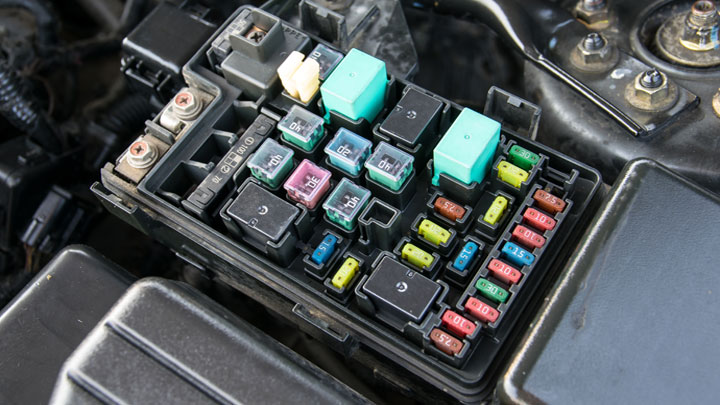
Virtually all cruise control systems are wired through a circuit protection device, such as an inline fuse. If this fuse were to blow, all power to this circuit would be lost. Power will only be restored by replacing this blown fuse.
If your vehicle’s cruise control fuse blows on more than one occasion, further inspection will be required to diagnose any circuit-related issues.
#2 – Faulty Cruise Control Switch
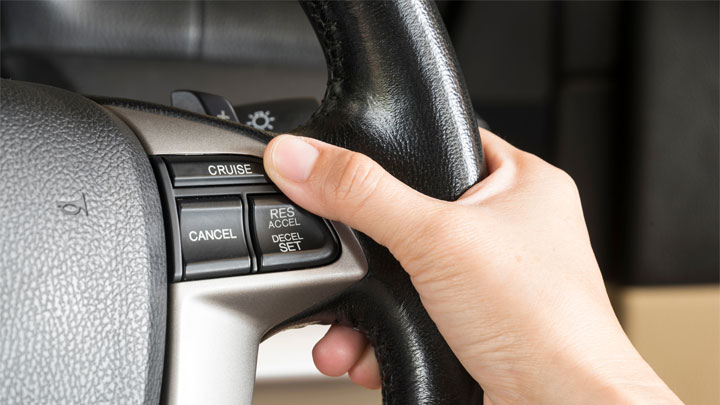
All cruise control systems are engaged through a driver’s manipulation of a designated cruise control switch. However, with time, the contact on a vehicle’s cruise control switch can become worn or burnt, thereby failing to function as intended.
When such issues occur, the replacement of the affected vehicle’s cruise control switch will be necessitated.
#3 – Malfunctioning Brake Switch

Cruise control systems are designed to disengage at any point that a vehicle’s brake pedal is depressed. A vehicle’s computer controls detect this brake pedal application through an electrical signal sent by a specialty brake switch.
This switch is typically mounted to the rear of a vehicle’s brake pedal linkage, along the firewall. In many cases, cruise control operation will cease entirely, in the event that this brake switch was to fail.
#4 – Speed Sensor Faults
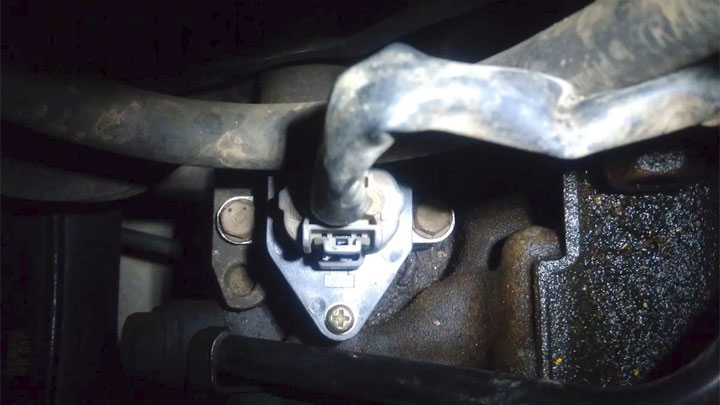
A vehicle’s management software relies upon feedback from a specialized speed sensor to determine vehicle speed, in a bid to regulate cruise control operation. This speed sensor is most often found along the tailshaft segment of a vehicle’s transmission housing.
Any fault related to this sensor can cause cruise control failure, ultimately requiring the replacement of this speed sensor itself.
#5 – Actuator/Cable Failure
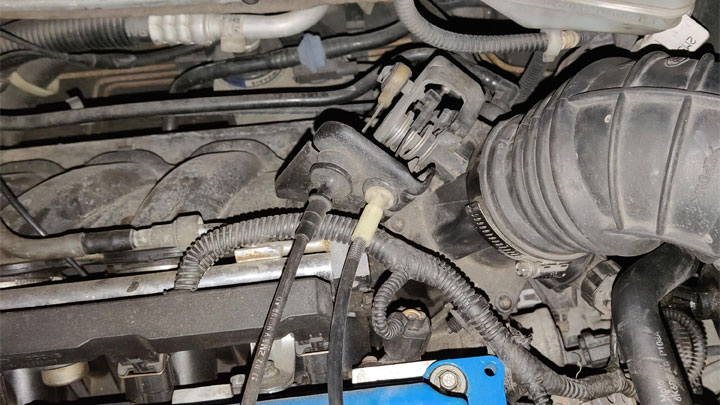
Cruise control systems found on most older vehicles were controlled through vacuum-actuated, cable-driven linkage. Engine vacuum routed through the system’s actuator resulted in the manipulation of a specialized throttle cable, which controlled the engine’s throttle plate position.
A loss of system vacuum, the failure of a vacuum actuator, or the breakage of a throttle cable could all result in cruise control interoperability on vehicles of this design.
How Safe Is Cruise Control? Can It Get Stuck?
The use of cruise control is inherently safe, especially in conjunction with late model vehicles that actuate such features electronically.
However, though rare, older cable-driven cruise controls could bind on occasion, causing a vehicle to accelerate upon engagement. Luckily, this inadvertent acceleration could usually be stopped by simply deactivating the cruise control or pressing the brake pedal.
The true danger associated with cruise control comes when it is misused by its operator. A certain amount of discretion is advised when choosing when, and where to implement the use of cruise control.
Such functions should never be used on winding roads that limit a driver’s sight distance or situations where rapid speed fluctuation might be necessitated.
Additionally, it is not advisable to use cruise control when feeling drowsy. Although many drivers consistently use their cruise control as a means of saving gas, the use of such automatic functions reduces the amount of driver input required for travel and can have detrimental effects on driver focus when already tired.
In such cases, one should pull off of the road when safe to do so and only continue once fully alert.
How Much Does It Cost to Fix Cruise Control Problems?
The exact cost associated with cruise control repair varies based upon the root cause of the underlying condition, as well as the make and model of the vehicle experiencing such issues.
Rather minor issues, including those involving a vehicle’s cruise control or brake switch typically, cost somewhere in the neighborhood of $150-$400 to repair, including parts and labor.
On the other hand, more severe failures, which often involve a vehicle’s cruise control actuator, or electronic hardware can be much more expensive to repair. The costs associated with repairs of this nature can often exceed $500, though these such costs can be even higher for luxury vehicles, or those of foreign make.




